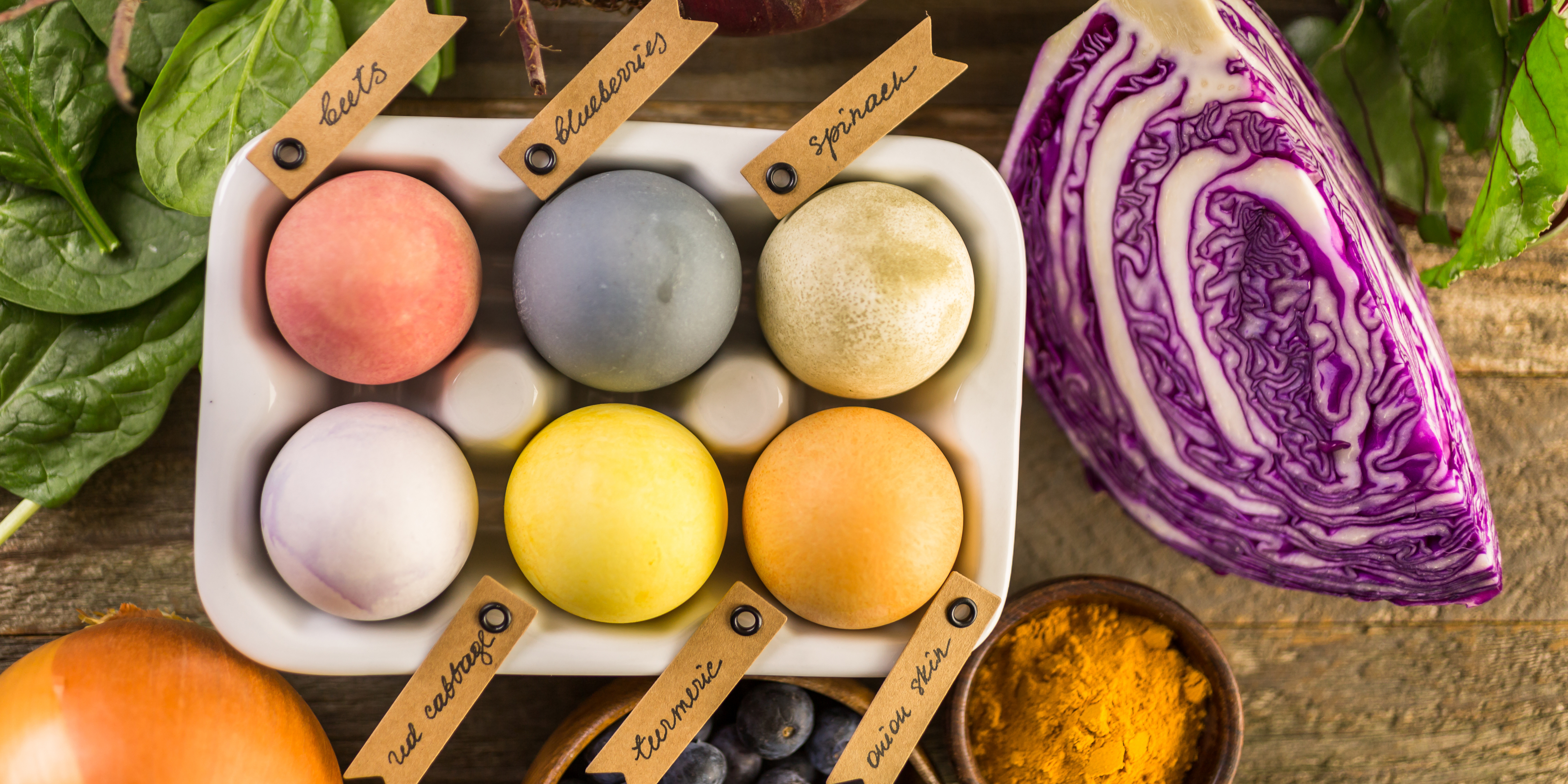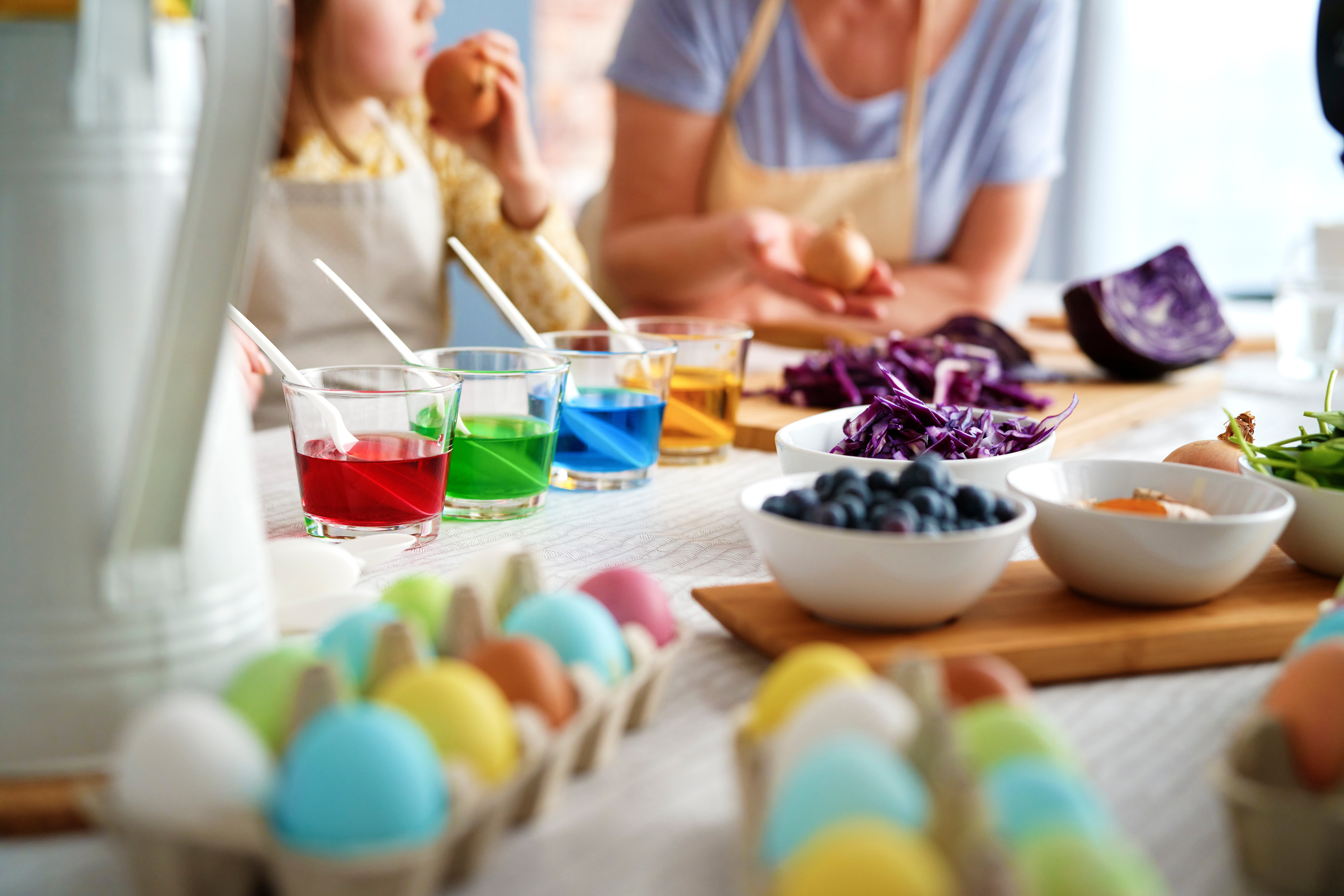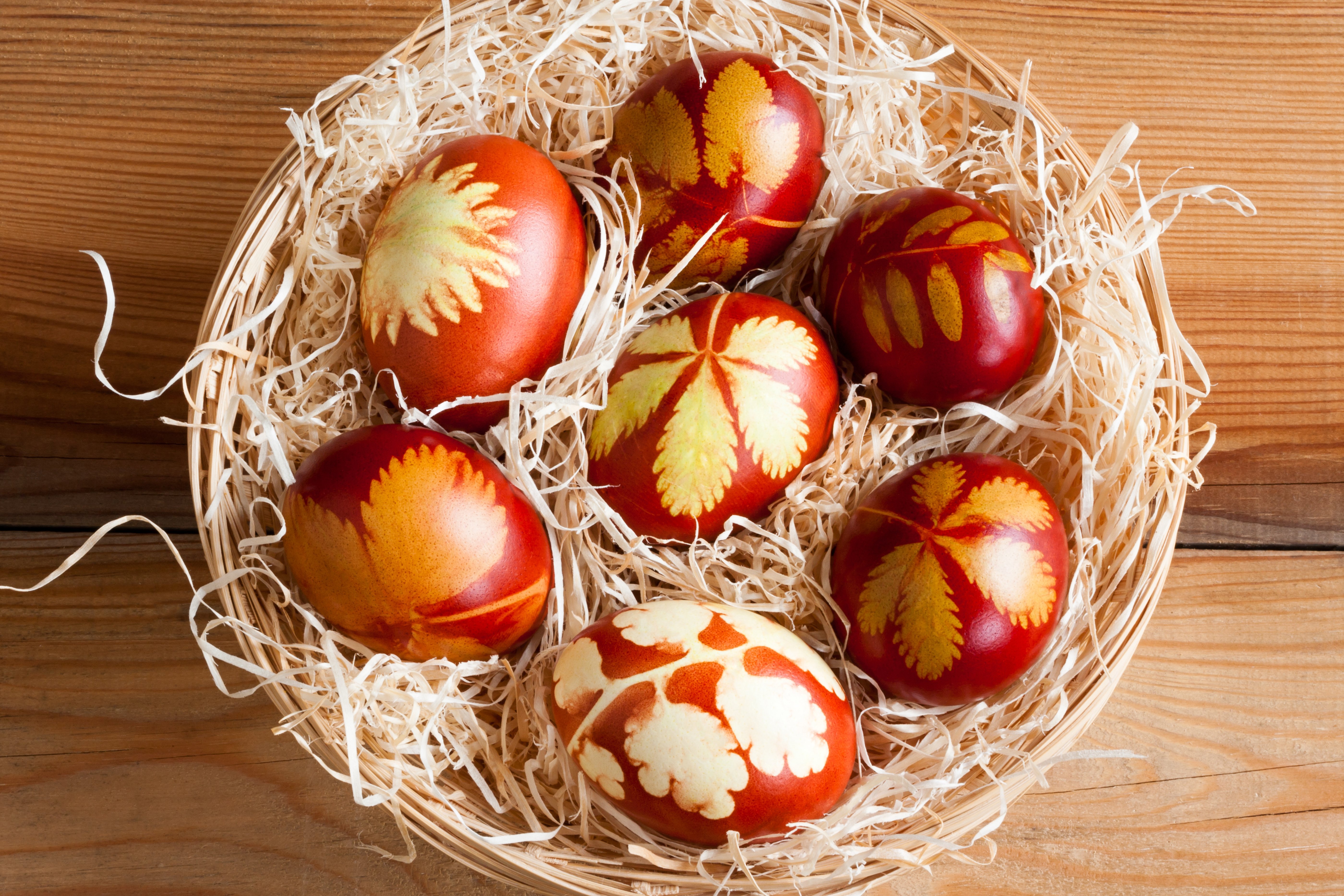How to Dye Easter Eggs Naturally With What's Already In Your Kitchen

Dyeing Easter eggs is a fantastic way to share your creativity and celebrate spring. For many families, it’s an annual tradition because it’s something people of all ages can enjoy.
We’ve all used those store-bought kits with an assortment of synthetic dye colors. You know the ones: they come with those awkward metal egg holders (which never seem to help much!) and maybe a few stickers or other supplies.
While those kits can be fun, you can also make your own dyes at home using all natural ingredients. In fact, you may already have most of the supplies you need in your kitchen already. So depending on how you plan your egg dyeing project, it might only cost you pennies!
Below are some suggestions of what you can use to dye your eggs and the colors you can create. The more material you use, the more vibrant your colors will be. The choice is totally up to you!

- Beets will give your eggs beautiful pinks and reds. But be careful when handling them with your kiddos since they are notorious for making stains! And, after using beetroots you can still eat the greens!
- Blueberries can provide lovely blues and grays. If you have some blueberries that are just past their prime, this may be the perfect solution to use them up.
- Spinach will make your eggs turn a beautiful, earthy greenish brown. And once you let your kids play with their food dyeing eggs, you may even be able to get them to enjoy eating spinach, too!
- Purple cabbage is one of the most beautiful and affordable ways to dye your Easter eggs. Using only about a quarter of a cabbage can yield some wonderful results and give you highly saturated purples.
- Turmeric can create vibrant yellows and golds. You can use fresh turmeric, but you’ll need a lot of it to create rich colors. So feel free to raid your spice cabinet and use dried, powdered turmeric.
- Onion peels are surprisingly full of pigment, and a great way to use non-edible parts of vegetables almost everyone has in their pantry already. Use onion peels to dye your eggs hues of deep orange.
Boil whatever you decide to use in water for at least 30 minutes or until you achieve the desired colors. Then just strain solid materials, and reserve the liquid to dye.
For every quart of dye, you’ll also want to add 1 tablespoon of salt and 1 tablespoon of vinegar before adding your eggs to help the dyes set.
Soak hard boiled eggs in your naturally made dyes for a few minutes, or a few hours depending on the effects you’re going for. Then, scoop them out with a spoon (no special tools required) and let them dry on a rack.
Voilà, your eggs are done!

If you want to level up your egg dyeing activity using natural materials, you can add stunning designs using plants. Give wilting flowers from a springtime bouquet a second life as impressions on your eggs, or you can go outside and find materials to use.
But there’s no need to go out and purchase fresh flowers just for this project. Even herbs like dill can make beautiful designs.
Press the flowers and leaves onto you uncooked eggs before you soak them in dye, and then wrap them in strips of cloth. (This is a great way to recycle old clothes or linens destined for the bin, but even old nylon stockings will work.)
Then boil your raw, wrapped eggs in the natural, homemade dyes you made for 8-10 minutes. So that the impressions really pop, take your eggs off the heat of your stove and let them soak for a few hours or even overnight. Then, get ready to be wowed and remove the cloth you’ve wrapped them in.
You can also enjoy a digital craft project with your family using MyPhoto. Instantly transform your favorite photos on any device by uploading them into My Photo and playing with spring themed backgrounds. Then, share your creations with your family and friends. To try My Photo for free today, click the picture below.
And don't forget to subscribe to The Holiday Blog for more ways to make the holidays special with the ones you love, all year long!







